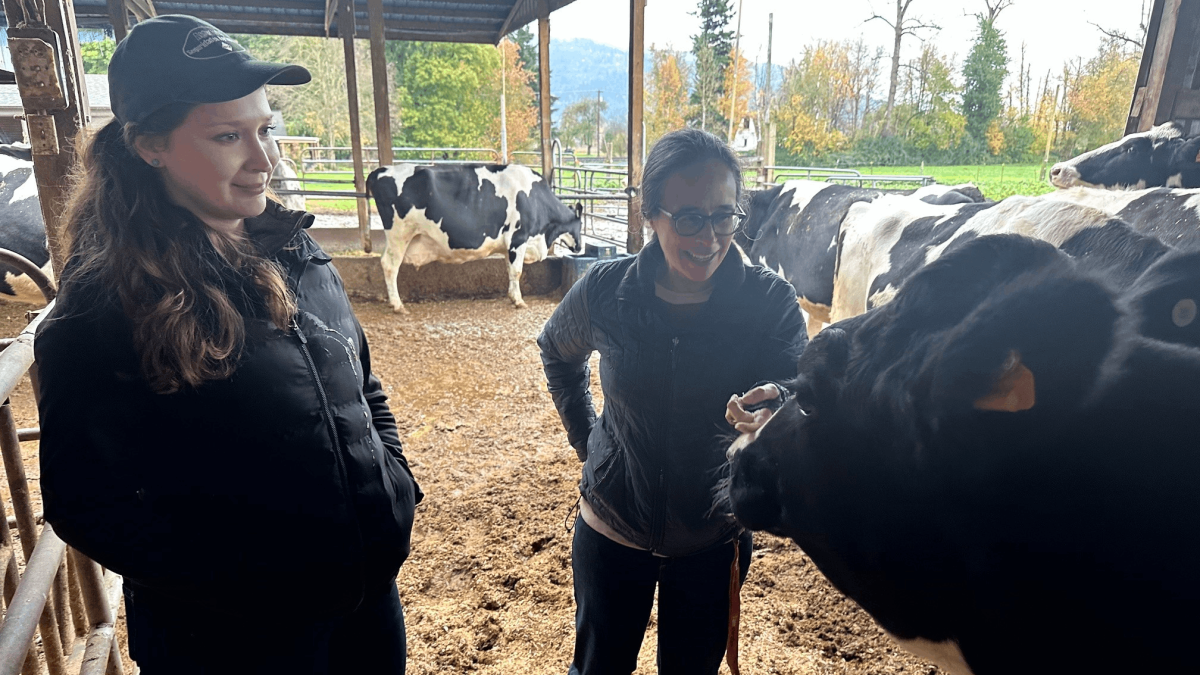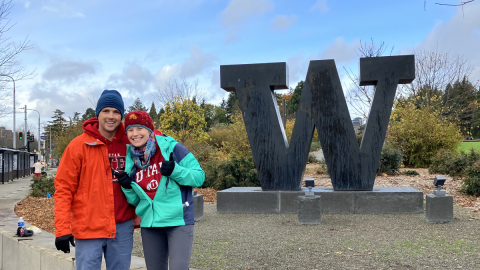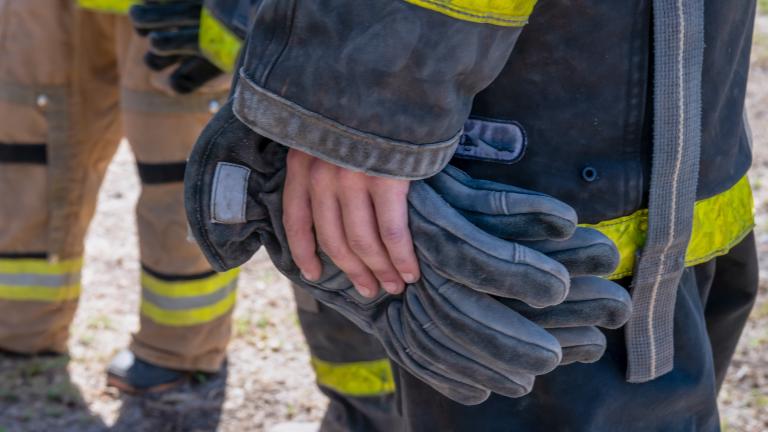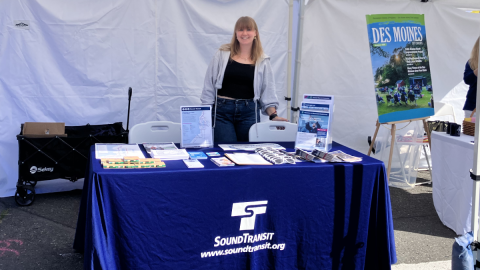In the past several years, avian flu has rapidly evolved. A new variant has caused widespread, deadly outbreaks on chicken farms. In the U.S., farmers have culled millions of hens, hiking the price of eggs. The virus has also jumped from birds to mammals, spreading among dairy herds.
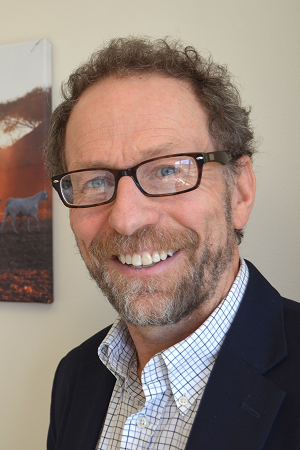
But bird flu also directly threatens people’s health. As of this month, 70 people in 13 states in the U.S. have come down with confirmed cases, and one has died. Most of those infected have been workers on dairy and poultry farms.
“People need to know how unprecedented this is,” said Dr. Peter Rabinowitz, professor in the UW Department of Environmental & Occupational Health Sciences (DEOHS) and director of the UW Center for One Health Research (COHR). “It's more global than it's ever been, and it's in more species than it's ever been. The longer it circulates like this, the more chance there is for some new variant to come out of it that's really going to affect people.”
Workers on chicken and dairy farms are “on the front lines” when it comes to health risks from the virus, Rabinowitz said. Now he and fellow researchers at COHR are developing training programs in partnership with dairy farms to help protect workers and prevent and control infections.
It’s an example of how policies that emphasize the interconnected health of humans, animals and the environment we share—a concept known as One Health—are critical to keeping the virus from spreading further.
Win-win solutions on the farm
Rabinowitz’s team is partnering with Washington state-based dairy processor Darigold in a project funded by a Safety and Health Investment Program grant from the Washington State Department of Labor & Industries.
The farms already use high-tech, data-driven techniques to improve milk production and animal health. Rabinowitz’s team hopes to complement those with modules focused on worker health.
“On dairy farms, there's potential not just for animals to infect people, but also for people to infect animals,” he explained.
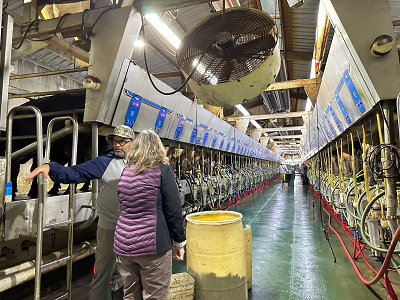
Some of the team’s recommendations for workers sound simple, but they are effective: wash hands frequently, wear protective equipment, work safely with needles, and keep updated with vaccinations. They also encourage workplaces to offer workers sick leave and other precautions to stem the spread of illness.
Next, the team hopes to partner with some large poultry farms to promote similar programs.
“We're really trying to build bridges with the dairy and poultry industries in Washington state and beyond, and find win-win solutions that are that are practical for industry, but also good for the workers,” Rabinowitz said.
The DEOHS team includes Associate Teaching Professor Nancy Simcox and researchers Vickie Ramirez, Natalie Rejto, Dennise Drury and Hannah Fenelon. A key partner on the project is Madeline Benoit, an environmental stewardship and policy lead at Darigold and an alum of the Occupational Health at the Human-Animal Interface research training program in DEOHS.
“We're showing the power of this One Health approach,” Rabinowitz said.
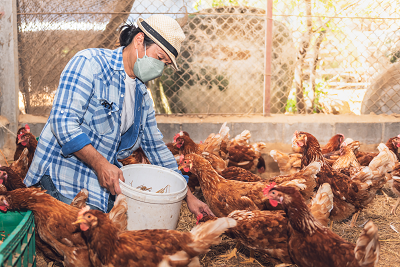
How did we get here?
Once called “fowl plague,” avian flu viruses have been circulating for centuries. But it wasn’t until 1997 that the world saw widespread outbreaks of highly pathogenic avian influenza, or H5N1. Since then, several factors have combined to create the current situation, Rabinowitz said:
The “chickenization of the world.” Global investment in raising chickens for protein means that the birds now outnumber humans five or six times over, compared to a one-to-one ratio in the 1950s. This means the virus is carried by many more birds, and has an easier time spreading in the close quarters of coops and infecting people who raise and process poultry.
A new variant. After a scare about a potential bird flu pandemic in 2006 and 2007 that didn’t materialize, “we dropped our guard and defunded a lot of pandemic preparedness work,” Rabinowitz said. Then, two years ago, a new variant of H5N1 began to circulate among wild and domestic birds “in ways we had never seen before,” he said.
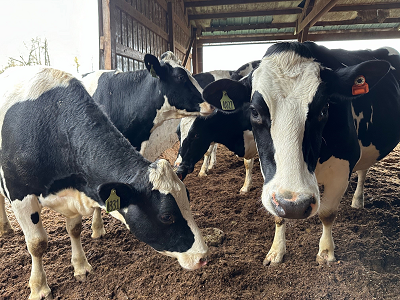
Spread into mammals, and transmission among them. Soon after these widespread outbreaks in birds, the virus began to infect mammals, including sea lions, seals, bears and wolves. At first, they were probably infected by eating dead birds, Rabinowitz said. But in 2024, the virus infected dairy cows and rapidly spread among herds. “Now we have hundreds of infected herds, and it looks like there’s some cow-to-cow transmission, so that’s worrisome,” he said. “We're also seeing people get infected with direct contact with milk or cows or poultry.”
The threat of human-to-human transmission. As we witnessed with the COVID-19 pandemic, viruses are wily innovators. There are now at least two strains of bird flu circulating: the one that jumped into cows, and one that is predominantly circulating in birds—raising the chances for different strains to recombine. That could make it more likely for the virus to make the leap scientists are most concerned about: being able to spread from person to person.
What can we do?
Currently the community risk of bird flu is low. Here are Rabinowitz’s top recommendations for the public right now:
Pay attention. Since avian flu is an evolving situation, it’s important to stay alert and watch for any advisories from public health agencies.
Stay safe. Report and avoid sick and dead animals in your area. Avoid raw milk and uncooked eggs.
Keep an eye on your pets. If you have outdoor pets like cats, monitor their health, and check in with your veterinarian if they get sick. “Cats may be out interacting with wildlife and could potentially get infected,” he said.
Take care with backyard flocks. If you have backyard chickens, Rabinowitz recommends keeping them away from contact with wild birds or other animals that could bring the virus into the flock. Wear a mask and gloves when you clean out the chicken coop.
